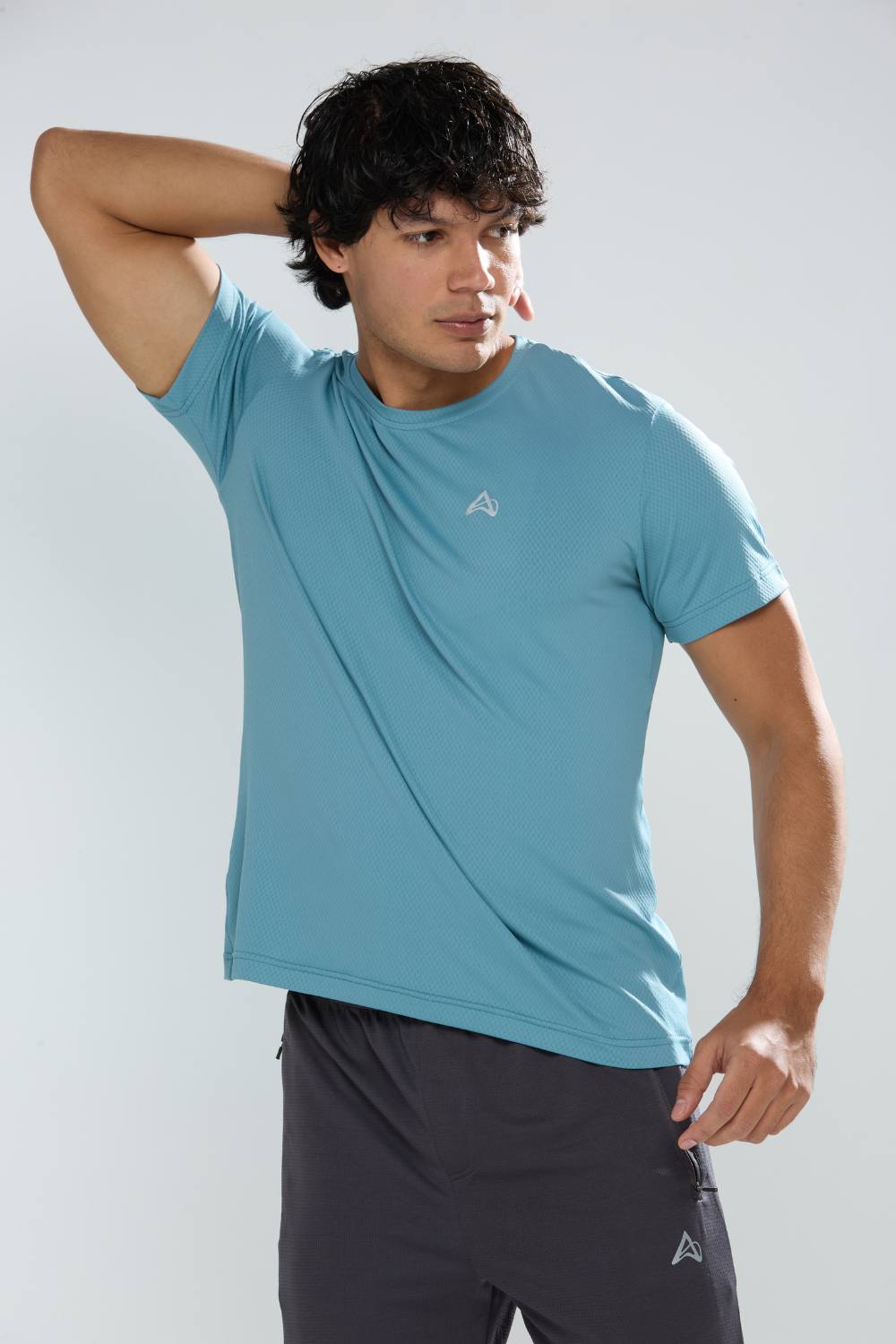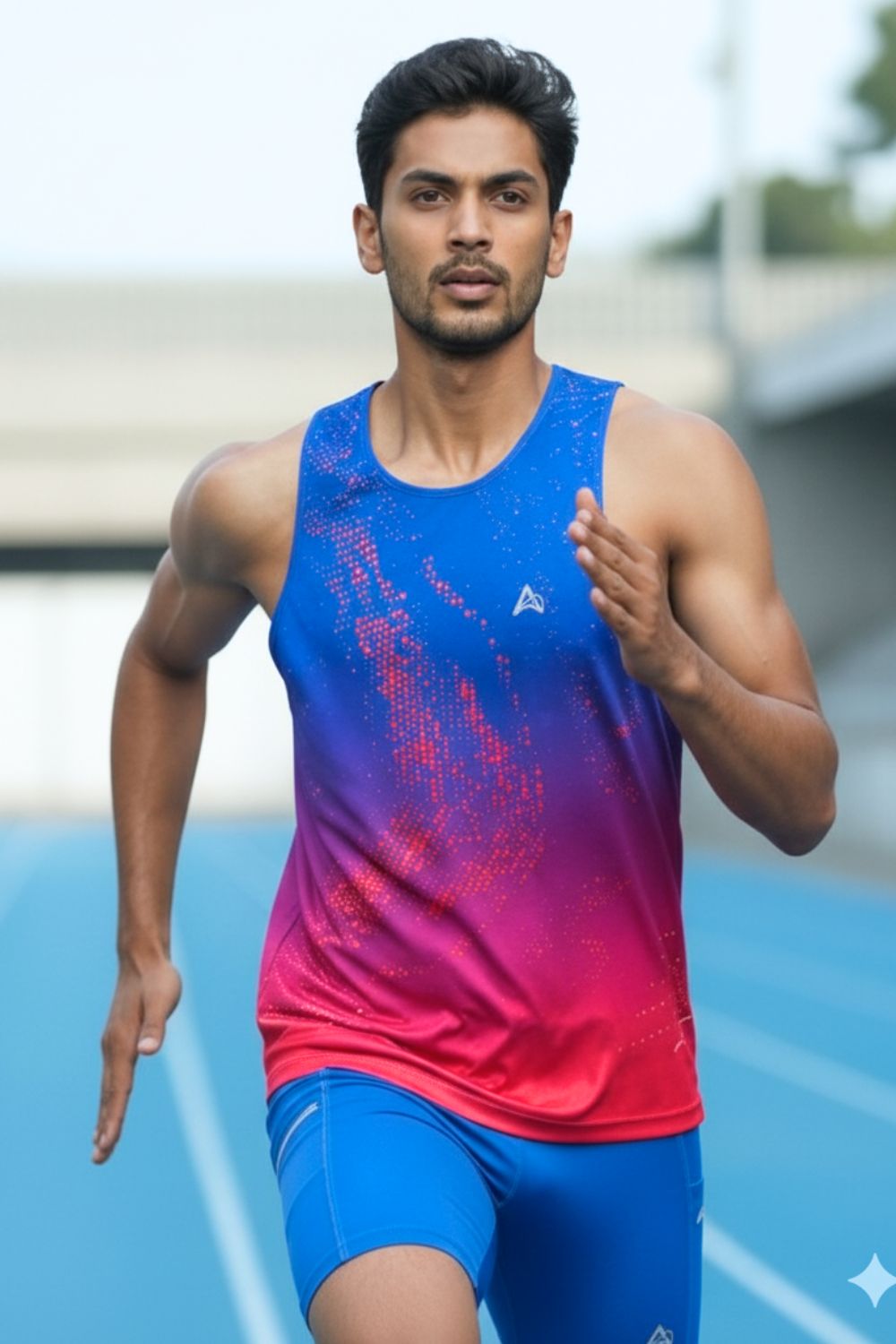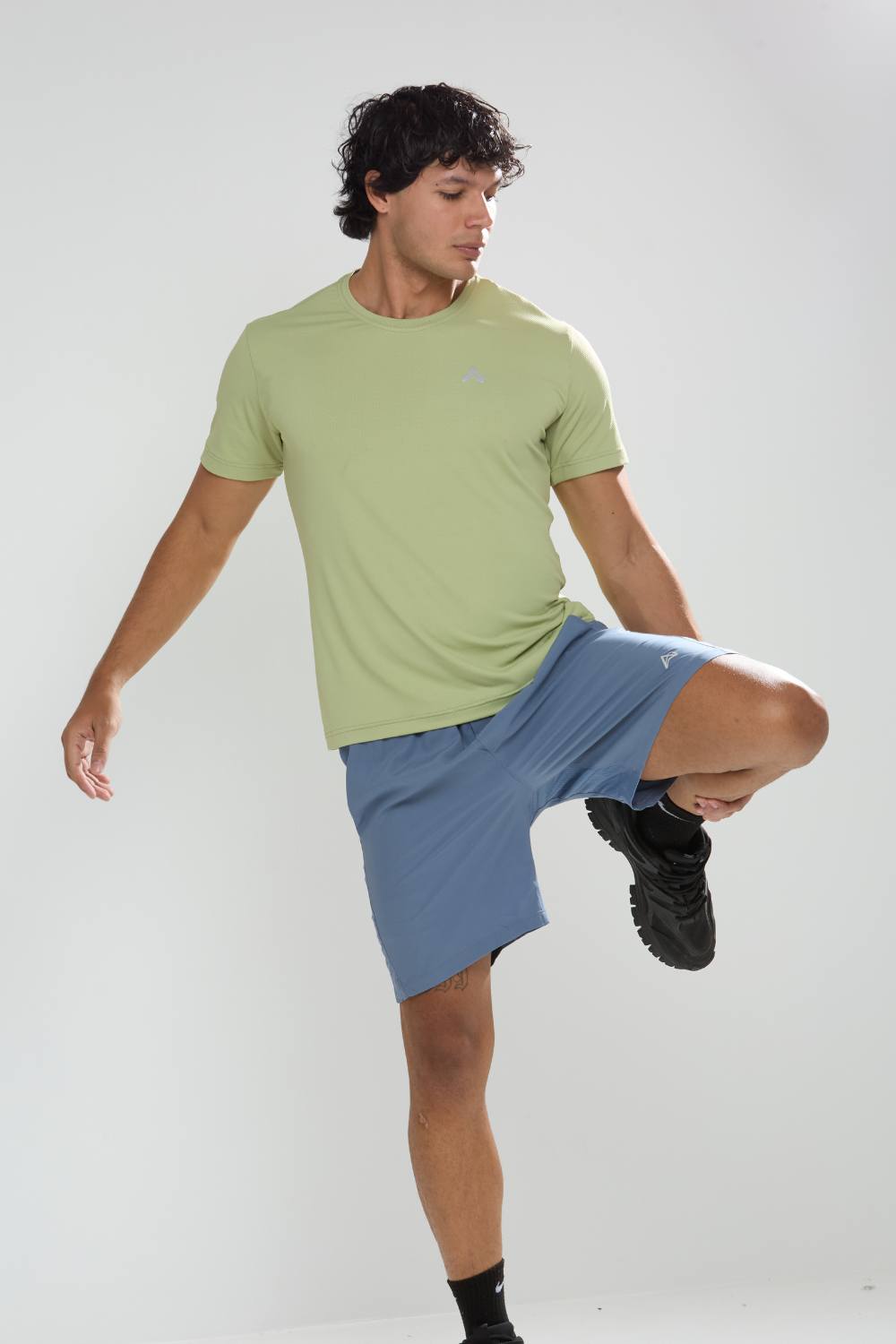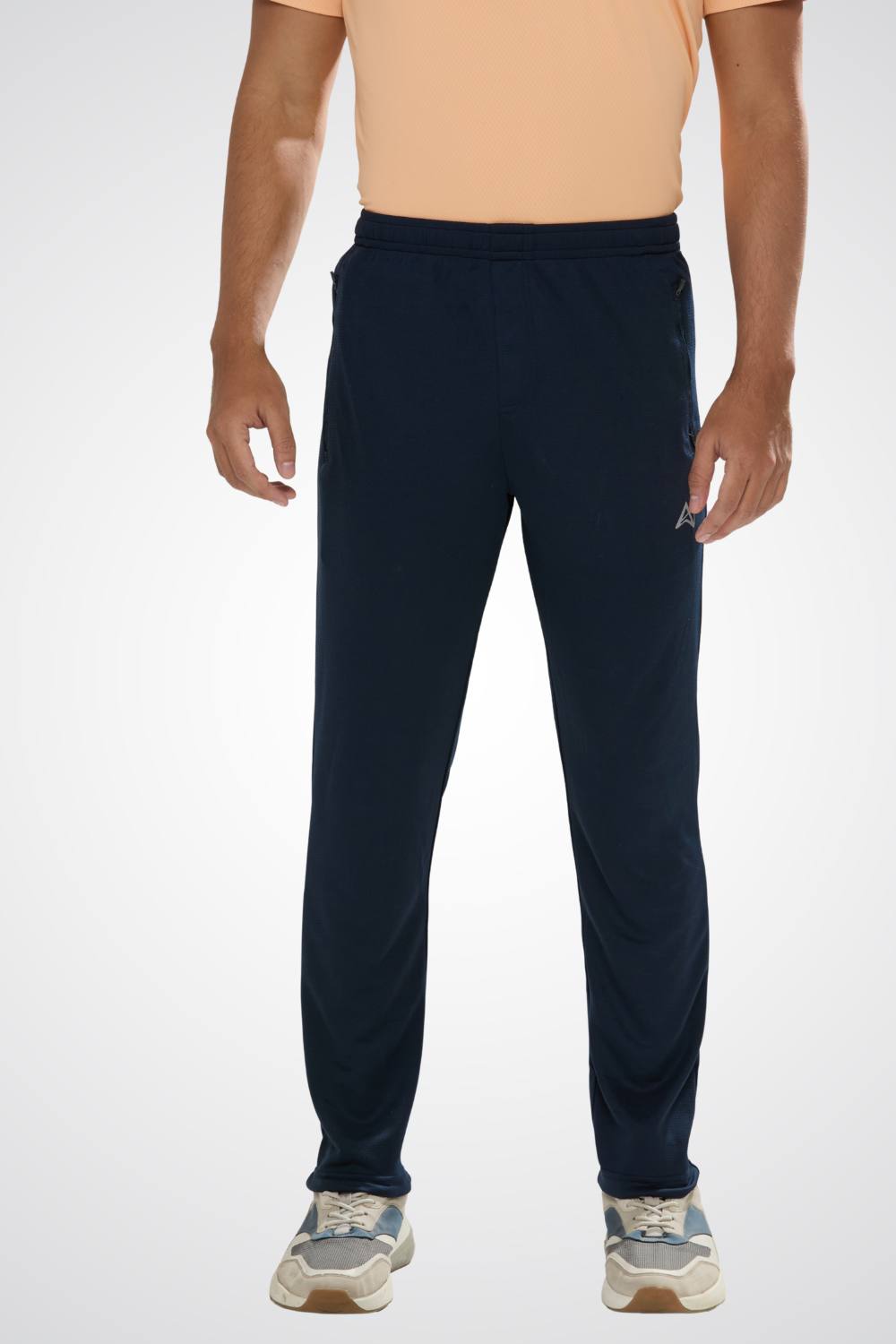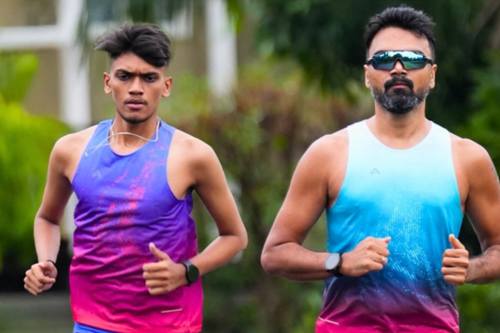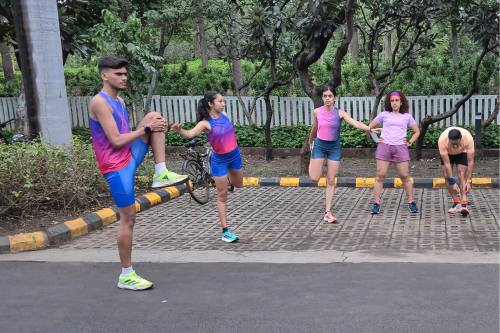Quick Listen:
The first light of dawn filters through the urban canopy, casting long shadows on dew-kissed paths where runners gather, their breaths syncing with the city's awakening pulse. From the bustling avenues of New York to the sun-baked trails of Cape Town, recreational runners worldwide are transcending mere exercise routines. They're meticulously adapting elite training methodologies once the domain of Olympians and ultramarathon veterans into personalized regimens that honor their local landscapes, weather patterns, and cultural rhythms. This dynamic interplay not only elevates individual performance but also propels the activewear industry into a new era of innovation, where gear must match the precision of these hybridized strategies.
Tired of gear that slows you down? Chafing, soggy fabrics, and missing pockets kill your run's momentum. At Aguante, we're runners who get it. Our high-performance activewear features moisture-wicking fabrics, ergonomic designs, and smart storage to keep you focused. Shop Now!
Global Trends Shaping Local Strides
Recreational running's surge shows no signs of slowing, underpinned by a profound recognition of its role in sustaining physical and mental well-being. As detailed in a comprehensive analysis submitted in June 2022, physical pursuits like running bolster health maintenance, with recreational participation skyrocketing in recent years yet persistent motivational dips frequently disrupt consistent engagement. This vulnerability is where digital ecosystems intervene decisively: platforms such as Strava, Zwift, and burgeoning AI-driven coaching apps are bridging continents, disseminating advanced protocols from Scandinavian interval sessions to Ethiopian long-run philosophies directly to backyard enthusiasts.
Consider the data underscoring this phenomenon. The global running gear market, pegged at USD 44.18 billion in 2024, stands poised to expand to USD 69.86 billion by 2033, propelled by a steady 5.18% compound annual growth rate through the forecast period. North America's commanding 31.1% market share in 2024 reflects a mature ecosystem, yet the momentum stems from universal drivers: escalating health awareness, technological leaps in smart fabrics and sensors, and a boom in organized events from marathons to trail challenges. Complementing this, the broader running gear sector encompassing shoes, apparel, and accessories valued at USD 23,386.8 million in 2024, is on track for USD 51,638.7 million by 2033, achieving a robust 9.2% CAGR. Europe holds the largest slice, while Asia-Pacific emerges as the velocity leader, fueled by urban fitness booms in megacities like Mumbai and Seoul.
These figures illuminate a pivotal shift: runners aren't passive consumers; they're informed architects of their progress. The 2024 Global Runner Survey, gleaned from thousands of participants, reveals runners averaging 11 events annually a slight dip from 2023's 12, signaling a pivot toward quality over quantity. Half marathons reign supreme at 35% preference, with a quarter embracing social runs via clubs, underscoring community as a motivational cornerstone. Notably, 93% cross-train with gym sessions or yoga, hinting at holistic adaptations where global techniques integrate seamlessly with local lifestyles.
Translating Elite Wisdom to Everyday Paths
Envision a predawn ritual in humid Bangkok: a runner pauses mid-stride, consulting a wearable that pulses data from a virtual coach trained on Boston Marathon blueprints. They tweak the prescribed tempo to navigate monsoon-slicked sidewalks, incorporating Thai-inspired breathwork for endurance. This scene exemplifies the grassroots revolution, where elite tactics high-intensity intervals, periodized cycles, plyometrics undergo rigorous localization. A recent narrative review on emerging distance running trends emphasizes bridging scientific rigor with empirical tweaks, advocating for personalized models that account for terrain variability and cultural recovery practices.
In high-altitude havens like Bogotá, locals forgo hypoxic tents by leveraging Andean inclines for natural VO2 max drills, their footwear echoing PUMA's LightSpray upper innovation from 2024 a robotic-manufactured marvel slashing weight while amplifying energy return. Meanwhile, in arid Perth, Australian runners borrow Namibian heat-acclimation protocols, donning UV-shielding layers that wick moisture faster than traditional synthetics. The recreational training shoes arena, valued at USD 34.38 billion in 2024 and forecasted at USD 36.18 billion for 2025, surges toward USD 53.80 billion by 2032 with a 5.76% CAGR. Asia-Pacific's overwhelming 95.52% dominance in 2024 underscores how brands like Adidas and Nike deploy advanced cushioning and lighter builds to empower these adaptations, transforming potential pitfalls into performance edges.
Local clubs amplify this exchange. São Paulo's vibrant grupos de corrida fuse Kenyan fartlek playful speed bursts with samba-infused cool-downs, mitigating humidity's toll. In Toronto's multicultural mosaic, winter warriors adopt Norwegian double-threshold sessions on snow-shoe clad paths, their gear layered for sub-zero resilience. Such ingenuity not only sustains motivation but ignites a virtuous cycle: as runners log gains via 22 top-tracked apps analyzed in a 2022 study, features like goal-sharing and performance acknowledgments foster intrinsic drive, turning solitary miles into communal triumphs.
Navigating the Terrain of Challenges
Yet, this globalization of techniques isn't a seamless glide; it demands vigilant navigation of formidable obstacles. Urban dens like Mexico City grapple with smog-veiled routes, compelling runners to hybridize open-country strides with indoor simulations a far cry from pristine Kenyan plains. In equatorial zones, temperate-originated regimens risk overheating; unadjusted polar training in Mumbai's swelter invites exhaustion, as evidenced by rising heat-related incidents in amateur ranks.
Injury looms as a stern sentinel. Enthralled by pro-volume escalations, novices often overlook progressive loading, courting IT band woes or Achilles strains. The same 2022 investigation with 15 recreational runners pinpointed how app-guided variety curbs monotony but warns against unchecked escalation, advocating balanced diversification. Economically, the chasm widens: while free online blueprints abound, outfitting for efficacy be it GPS-enabled vests or biomechanic-optimized soles exacts a premium. The 2024 gear valuation of USD 23,386.8 million belies accessibility for many, where a single high-end pair eclipses monthly budgets, perpetuating inequities in this democratized sport.
Socio-cultural frictions add layers. In conservative locales, women's adoption of unveiled global norms clashes with modesty edicts, necessitating apparel innovations like modular hijab-compatible hoods. The survey's nod to 41% favoring income-tiered fees highlights inclusivity's urgency, lest growth stagnate at elite echelons.
Unlocking Innovation's Horizon
For activewear titans, these crosscurrents herald unprecedented prospects. The clarion call? Forge gear that anticipates localized exigencies: monsoon-repellent membranes for Southeast Asia, grippier treads for volcanic Icelandic jogs, or AI-embedded insoles calibrating in real-time to gait shifts. With Asia-Pacific's explosive trajectory and Europe's entrenched scale, conglomerates like Under Armour and New Balance are pivoting toward bespoke lines ventilated uppers for tropics, insulated weaves for tundras mirroring the 9.2% CAGR trajectory.
Grassroots synergies beckon too. The survey's revelation of social media's 48% discovery sway, paired with word-of-mouth's 52%, positions brands for authentic endorsements at 5Ks and parkruns. Sponsoring Jakarta's pothole-dodging derbies or London's drizzle-defying dashes cultivates allegiance, as runners tout gear that "gets" their grind. Currents amplify this: functional trainings' ascent per ACSM rankings integrates yoga flows with sprint drills, demanding versatile apparel; AI personalization, as in marathon modeling studies, tailors regimens to biometrics, urging responsive textiles.
Run clubs, trend dispatches, endure as social crucibles, blending virtual global challenges with hyper-local meetups think VR-simulated Ethiopian highlands transposed to Vancouver parks. Wearables evolve too, with VR training and women's sports surges promising equitable access, per sports analytics forecasts. Brands heeding these investing in sustainable, adaptive prototypes stand to capture the 5.18% gear swell, transforming runners from users to co-creators.
Charting the Course Ahead
As twilight drapes the horizon, a lone figure crests a hill, silhouette etched against fading light a microcosm of resilience amid flux. Recreational running's trajectory orbits this equilibrium: harnessing planetary prowess while rooting in parochial soils. Prognostications for 2025 brim with hybrid vigor: data-orchestrated wearables fusing with communal lore, birthing regimens resilient to climate caprice and urban sprawl.
The 2024 Global Runner Survey's pulse of vitality new pacts with European Athletics, inclusivity thrusts foretells amplified participation, with half marathons as gateways and cross-training as glue. Activewear stewards must champion this: channeling R&D into climate-smart customizations, from adaptive fabrics to app-synced ensembles. For the everyday trailblazer, whether donning recreational training shoes laced with robotic precision or riffing on interval edicts, the essence endures: running as alchemy, transmuting global echoes into profoundly local symphonies. In this stride, we glimpse not just fitness, but a world reconnected one footfall at a time.
Frequently Asked Questions
How are recreational runners adapting elite training methods to their local environments?
Recreational runners are localizing elite techniques by modifying global training protocols to suit their specific terrain, weather, and cultural contexts. For example, runners in Bangkok adjust Boston Marathon blueprints for monsoon conditions, while those in Bogotá leverage natural Andean inclines instead of hypoxic tents for VO2 max training. This adaptation process combines scientific rigor with practical adjustments, allowing everyday runners to benefit from Olympic-level strategies while honoring their local landscapes and limitations.
What role does technology play in helping recreational runners access global training techniques?
Digital platforms like Strava, Zwift, and AI-driven coaching apps are bridging continents by disseminating advanced protocols from Scandinavian interval sessions to Ethiopian long-run philosophies directly to backyard enthusiasts. These technologies enable runners to access virtual coaches trained on elite blueprints, while wearables provide real-time data to help adjust prescribed tempos for local conditions. The integration of technology allows runners to combine global expertise with hyper-local adaptations, creating personalized training regimens that account for everything from terrain variability to cultural recovery practices.
How is the growing trend of localized global training techniques impacting the running gear market?
The adaptation of global techniques to local conditions is driving significant innovation in the running gear market, which is projected to grow from USD 44.18 billion in 2024 to USD 69.86 billion by 2033. Brands are developing specialized gear for different environments, such as monsoon-repellent membranes for Southeast Asia, grippier treads for volcanic terrains, and UV-shielding layers for arid climates. This localization trend is pushing activewear companies to create bespoke lines with features like AI-embedded insoles and climate-smart customizations, transforming runners from passive consumers into co-creators of their gear.
Disclaimer: The above helpful resources content contains personal opinions and experiences. The information provided is for general knowledge and does not constitute professional advice.
You may also be interested in: Aguante - Activewear Clothing
Tired of gear that slows you down? Chafing, soggy fabrics, and missing pockets kill your run's momentum. At Aguante, we're runners who get it. Our high-performance activewear features moisture-wicking fabrics, ergonomic designs, and smart storage to keep you focused. Shop Now!
Powered by flareAI.co





